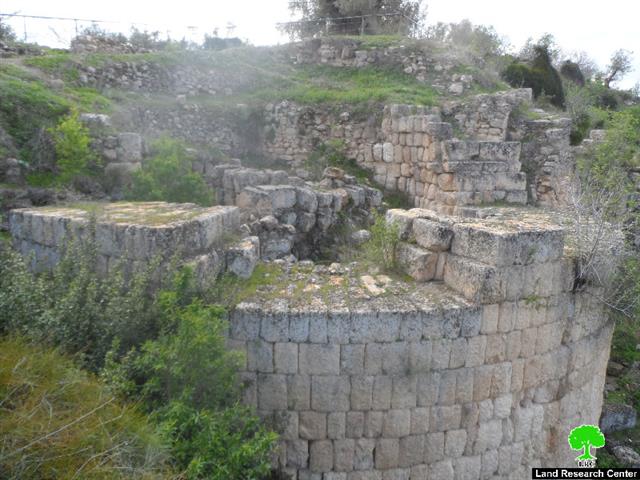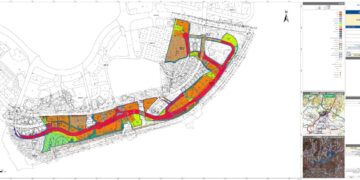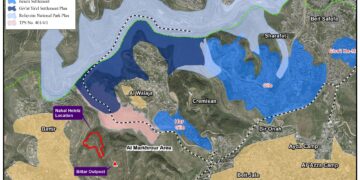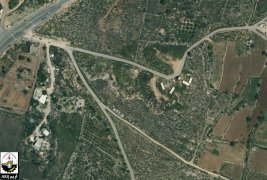Violation: Attempts at changing the historical character of the city
Location: Sabastiya- Nablus
Date: 04/06/2014
Perpetrators: The so-called Israel Antiquities Authority
Victims: People of Sabastiya
Details:
Atop the green hills overlooking beautiful scenery and numerous springs in the countryside of Nablus, Sabastiya is located. Every inch of the 100- dunum area of Sabastiya tells a story of history and civilization. It has been inhabited for over 3000 years and witnessed various civilizations and empires that have shaped the historical character of the city.
In parallel with enjoying great cultural legacy, Sabastiya is a target by right- wing activists and the Israeli government as colonists organize trips to the historical sites in Sabastiya in coordination with Israel Ministry of Education or via colonial societies that consider the land Jewish and advertise propagandas and falsified narratives to feign history and create one based on lies.
Within the same context, Israel Ministry of Tourism set up signs, banners and billboards introducing the history of the area to the Israeli tourists. The Israeli authorities placed Hebrew signs around the monuments and archaeological sites and established public facilities to the tourists.
Pictures 1-4: Some of the targeted monuments in Sabastiya
On top of that, the Israeli occupation poses severe complications on any Palestinian development project or renovation of the monuments that should be carried out through the Israeli authorities as Israel is in charge of area C according to Oslo Accords (as 42% of Sabastiya is area C), thus restricting any development in the area, whether in tourism, media or any other related sector.
About the history of Sabastiya:
Sabastiya is a small Palestinian town set in a fertile valley where figs, olives, almonds, grapes and other fruits and vegetables are grown. It is a fascinating town with a long and rich history and where, to this day, ancient columns built in Roman times still stand. It has a population of a little over 3,000 people, all living under the weight of military occupation.
Sabastiya is home to a number of important archaeological sites. Ruins dominate the hillside and comprise remains from successive cultures dating back 10,000 years.
The city's history is linked with Omri, the King who built the city of Samaria in the area. Assyrians followed and the Sabastiya was a 'Hellenistic' city for a while before being destroyed.
The city was destroyed by Alexander the Great in 331 BCE, and was destroyed again by John Hyrcanus in 108 BCE. Pompey rebuilt the town in the year 63 BCE. In 27 BCE, Augustus Caesar gave it to Herod the Great. Herod expanded and renovated the city, and named it "Sebaste", meaning "Augustus", in the Emperor's honor. Herod the Great had his sons Alexander and Aristobulus brought to Sebaste, and strangled in 7 BCE after a trial in Berytus and getting permission from Caesar.
In modern-day Sebastia, the village's main mosque, known as the Nabi Yahya Mosque, stands within the remains of a Crusader cathedral that is believed to be built upon the tombs of the prophets Elisha, Obediah and John the Baptist beside the public square. There are also Roman royal tombs, and a few medieval and many Ottoman era buildings as well as the forum, the basilica, the theater, the temple to Augustus, a colonnaded street and parts of Sabastiya’s ancient walls and a church that was built during the Byzantine period on top of the Roman necropolis, outside the walls on the eastern side which survive in a good state of preservation.
(Source: The Municipality of Sabastiya , Riwaq, and Wikipedia)
Prepared by
The Land Research Center
LRC

















